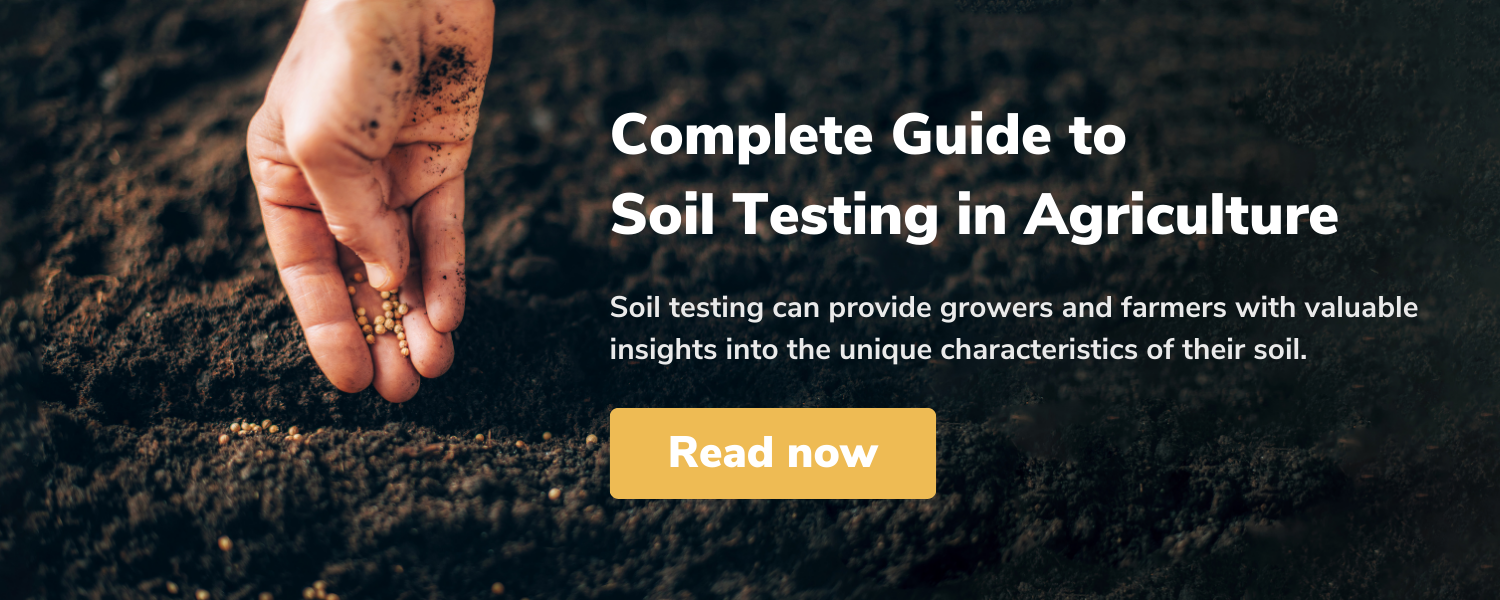Share this
How Soil Health Impacts Farm Legacy and Profitability
by Jamie Nix on 12/Apr/23
How does soil health impact intergenerational land profitability?
Preserving the land for future generations is a top priority for most intergenerational farms. Providing children and grandchildren with a proud legacy and profitable business begins with sustainable farming practices that help ensure future productivity.
From generation to generation, long-term farm success can often be traced back to the health of the soil and how it is managed. In this post, we will explore how a lack of good soil practices can impact farm profitability, now and in the future, and how to measure and monitor the health of the soil to keep the legacy alive.
.webp?width=1920&height=1500&name=How%20Soil%20Health%20Impacts%20Farm%20Legacy%20and%20Profitability%20(1).webp)
The Importance of Soil Health to Agriculture
Soil health is characterized by the ability of the soil to function as a living ecosystem, providing essential ecosystem services, such as nutrient cycling, water retention, and pest control. The key components of soil health are organic matter, soil structure, and a diverse population of microorganisms.
For crops, healthy soil results in stronger roots, better water infiltration, and improved nutrient uptake, leading to better growth and yield. For livestock, healthy soil provides the nutrients, water, and structure necessary for forage growth, which in turn supports the animals’ nutritional needs, health, and productivity.
Soil health also plays a key role in the health of the environment. With its ability to store carbon, healthy soil helps to mitigate climate change. Additionally, soil health practices can help improve water quality and increase biodiversity, creating a more sustainable and resilient farm ecosystem. Overall, maintaining healthy soil keeps the intergenerational farm productive and profitable for future generations and helps preserve the planet.
How to Improve Soil Health for Future Generations
Farming families can adopt sustainable farming practices to improve and preserve soil health for future generations. One of the most effective methods is the use of cover crops. Cover crops are planted between cash crops to protect the soil from erosion and to add organic matter to the soil.
Eliminating or reducing tillage practices also helps to improve and preserve soil health. Reduced tillage involves using minimal tillage to prepare the soil for planting. This practice helps to reduce erosion and maintain soil structure.
Implementing rotational grazing on the ranch, where livestock is moved from one piece of fenced land to another, can help protect the soil from compaction, which can lead to runoff and the loss of rich topsoil. By rotating grazing areas, animals can be moved around the farm without causing significant stress to any one area of the landscape. There are also studies that show that rotational grazing helps to sequester carbon.
Using sustainable biological inputs that work with the soil’s biology, not against it, can also help farmers maintain the health of their soil, while also generating positive business results, including reducing input costs and increasing crop yield. But how can farmers work with the soil’s biology in the first place?
Biological soil testing and monitoring the farm’s progress over the years can help ensure conditions continue to be conducive to plant growth and animal health. A fifth-generation Nebraska corn and soybean farmer, Matt Rasmussen, believes biological soil testing is important. When we recently sat down with him, Matt explained how the BeCrop® Test changed his outlook on farming, noting that “if you aren’t testing, you’re guessing.” BeCrop® technology helps remove the guesswork, giving farmers the tools to understand and interpret soil health and functionality.
The Role of Soil Health in Intergenerational Land Ownership
Intergenerational land ownership can help to preserve soil health by providing a long-term perspective on land management. Multi-generational farms often face challenges, such as pressure to maximize short-term profits, which can lead to neglecting the soil.
However, when land is passed down through generations, the focus shifts to preserving the land for its descendants. This perspective allows for implementing sustainable farming practices that promote soil health and long-term soil equity. Additionally, intergenerational land ownership provides an opportunity to share knowledge and communicate about the importance of soil health and biology.
Conclusion
Intergenerational land ownership is a dynamic process where each succeeding farmer's practices play a crucial role in determining the future performance of the family farm. To maintain the productivity of the farm for future generations, farmers can consider adopting practices that prioritize soil biology. Testing the effectiveness of these practices can help farmers understand the impact of their decisions on soil health. By preserving soil health, farmers can ensure that their legacy remains productive for years to come.
Share this
- June 2025 (2)
- September 2024 (1)
- August 2024 (1)
- July 2024 (1)
- June 2024 (2)
- May 2024 (2)
- April 2024 (2)
- March 2024 (1)
- February 2024 (1)
- January 2024 (1)
- November 2023 (1)
- October 2023 (1)
- September 2023 (1)
- August 2023 (2)
- July 2023 (2)
- May 2023 (2)
- April 2023 (3)
- March 2023 (3)
- February 2023 (2)
- January 2023 (1)
- November 2022 (1)
- October 2022 (2)
- September 2022 (1)
- August 2022 (3)
- July 2022 (3)
- June 2022 (1)
- May 2022 (5)
- April 2022 (7)
- August 2021 (1)
- July 2021 (1)
- May 2021 (1)
- April 2021 (4)
- November 2020 (3)
- October 2020 (4)
- September 2020 (1)
- August 2020 (3)
- July 2020 (1)
- June 2020 (1)
- May 2020 (2)

